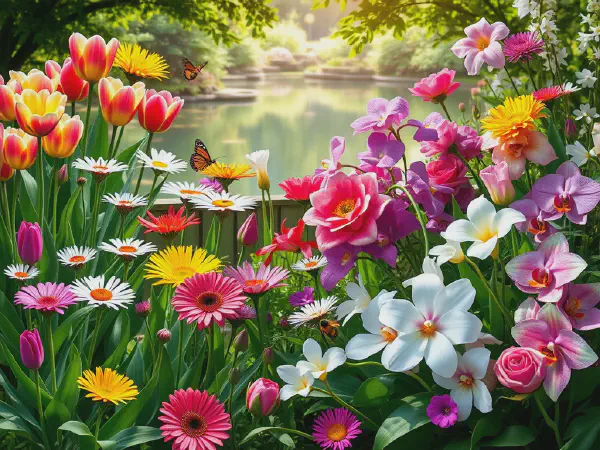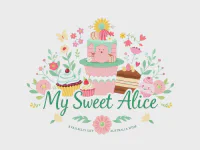Discover the Diverse Types of Flowers: A Garden Guide

Types of Flowers
Flowers come in an astonishing variety of shapes, sizes, colors, and scents, captivating our senses and enriching our lives. Understanding the different types of flowers can enhance our appreciation for these natural beauties and help us make informed choices for our gardens, arrangements, and indoor spaces. In this article, we will explore various types of flowers, including annuals, perennials, wildflowers, indoor flowers, and exotic flowers, to give you a comprehensive overview of the floral world.
The world of flowers is divided into several categories based on their life cycle, growth habits, and usage. These classifications help gardeners and horticulturists select the right flowers for their specific needs, whether for seasonal blooming, long-term growth, or ornamental purposes. In addition to aesthetics, different types of flowers serve various ecological functions, from attracting pollinators to providing food sources and habitat for wildlife.
When choosing flowers for gardens or arrangements, it is essential to consider not only their beauty but also their growing conditions, maintenance requirements, and compatibility with other plants. By understanding the characteristics of each type of flower, gardeners can create vibrant landscapes full of color and fragrance throughout the seasons. From the cheerful blooms of annuals to the resilient nature of wildflowers, there is a flower for every preference and situation.
Flowering plants have long held cultural significance, often symbolizing love, friendship, and celebration. Different types of flowers carry various meanings, making them popular choices for gifts and decorative purposes. By exploring the diverse categories of flowers, we can better appreciate their natural charm and the roles they play in our lives, from weddings and holidays to simple home decor and personal enjoyment.
In summary, understanding the different types of flowers, including annuals, perennials, wildflowers, indoor flowers, and exotic varieties, can help us appreciate their diversity and importance in various environments. Whether you are a seasoned gardener or a flower enthusiast, learning about these distinctions can enhance your experiences with floral beauty and creativity.
Annual Flowers
Annual flowers are plants that complete their life cycle within a single growing season. They germinate, bloom, produce seeds, and die all in one year. These flowers are known for their vibrant colors and ability to provide instant gratification in the garden, making them favorites among gardeners looking for quick results.
Some popular annual flower varieties include marigolds, petunias, zinnias, snapdragons, and impatiens. Each of these flowers offers unique colors and shapes, allowing for a multitude of creative gardening arrangements and combinations.
To care for annual flowers, it is essential to provide them with adequate sunlight, regular watering, and well-drained soil. Fertilizing during the growing season can also help promote vibrant blooms and healthy growth. Deadheading spent flowers encourages more blooms throughout the season.
Annual flowers are often used in landscaping for seasonal borders, hanging baskets, and container gardens. Their bright colors can enhance the visual interest of a space and attract pollinators such as bees and butterflies to the garden.
Perennial Flowers
Perennial flowers are plants that live for more than two years, typically going through cycles of blooming and dormancy. Unlike annuals, perennials can provide beautiful blooms year after year, making them a staple in many gardens.
Some top perennial flowers for gardens include daylilies, peonies, coneflowers, and hostas. These flowers not only add color and texture to the landscape but can also provide a sense of continuity and stability.
Growing conditions for perennials vary, but most prefer full sun to partial shade and well-draining soil. It's important to choose the right perennial for the specific environment and to understand its water and nutrient needs.
Maintaining perennial flowers involves dividing overcrowded plants, deadheading spent blooms, and mulching to retain soil moisture and suppress weeds. Proper care can lead to flourishing perennials that bloom beautifully year after year.
Wildflowers
Wildflowers are native plants that grow spontaneously in their natural habitats without human intervention. They adapt to local conditions and can vary widely in appearance, depending on their environment. Common examples include daisies, lupines, and bluebells, each thriving in specific ecosystems.
The benefits of planting wildflowers include promoting biodiversity, attracting beneficial pollinators, and requiring less maintenance than cultivated flowers. Wildflower gardens can create a naturalistic look while supporting local wildlife.
To grow wildflowers, select native seed varieties suitable for your region and prepare the soil by removing weeds and debris. Scatter the seeds and lightly rake the soil to ensure good seed-to-soil contact. Watering may be necessary until the seedlings establish.
Wildflowers can flourish in various climates, from arid deserts to moist meadows. Selecting the right species for the climate will result in a thriving wildflower garden that enhances the local ecosystem.
Indoor Flowers
Indoor flowers are plants grown primarily indoors for decorative purposes. These flowers can provide a splash of color and life to any room, improving indoor air quality and personal well-being. Some of the best types of indoor flowers include peace lilies, orchids, and African violets.
Care requirements for indoor flowers include providing appropriate light conditions, regular watering, and proper humidity levels. Many indoor flowering plants prefer indirect sunlight and should be watered when the top inch of soil feels dry.
The aesthetic benefits of indoor flowers extend beyond mere beauty; they can create a welcoming atmosphere and reduce stress levels. Indoor flowers can also serve as a personal expression of style and taste in home décor.
Popular indoor flower options include gerbera daisies, bromeliads, and kalanchoe. These flowers often have unique blooms and can thrive in various indoor conditions, making them excellent choices for any home environment.
Exotic Flowers
Exotic flowers are unique plants that are not typically found in local gardens and often originate from faraway regions. They are known for their unusual colors, forms, and fragrances. Examples include the blue vanda orchid, bird of paradise, and corpse flower, each showcasing striking characteristics.
Top exotic flowers to grow at home include the anthurium, strelitzia (bird of paradise), and the passion flower. These flowers can be a stunning addition to gardens or indoor spaces, contributing to a diverse floral palette.
Cultivation challenges for exotic flowers include ensuring the right climate, soil conditions, and care specific to each plant type. Many exotic flowers may require special attention to humidity and temperature to thrive.
Exotic flowers are often used in arrangements, adding a unique touch to floral displays and events. Their striking appearance can evoke wow factors in bouquets and centerpieces, making them popular choices for special occasions.
